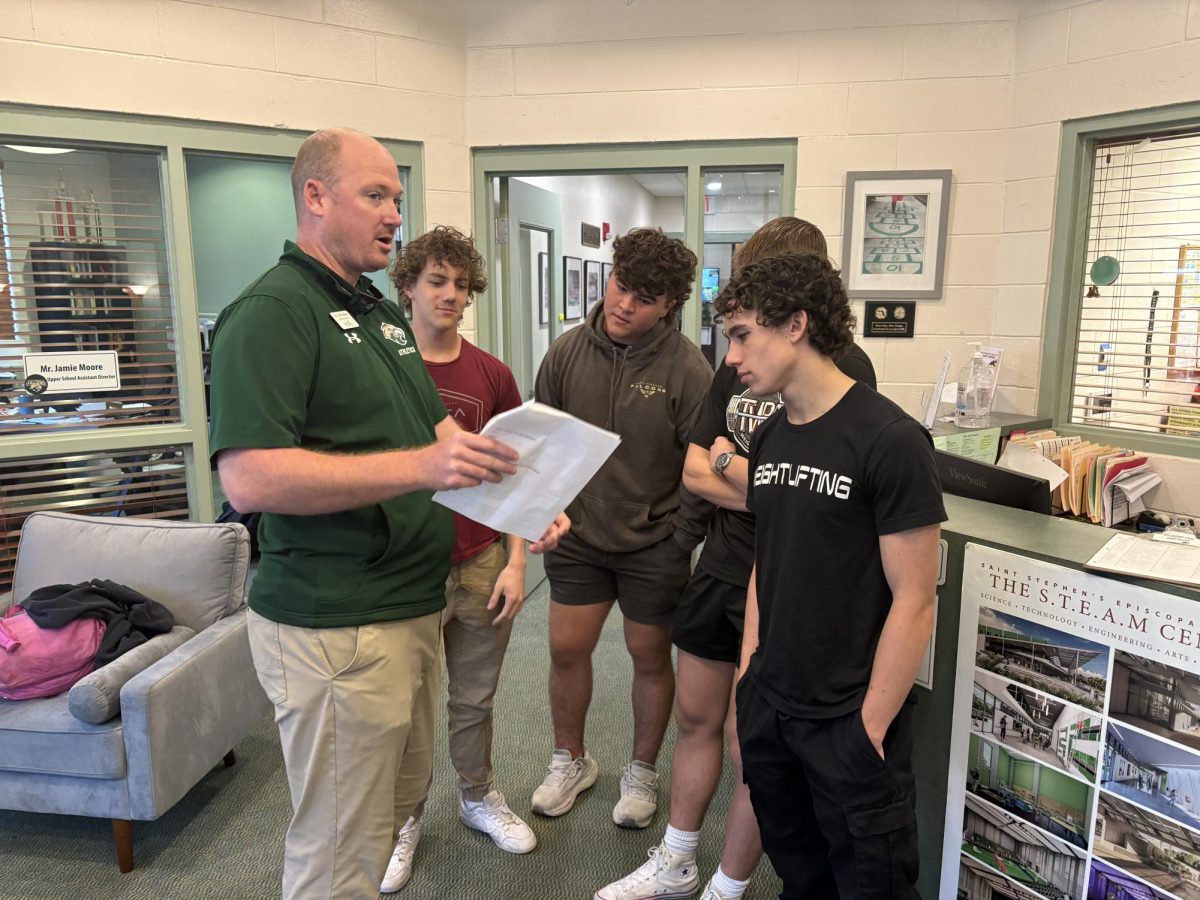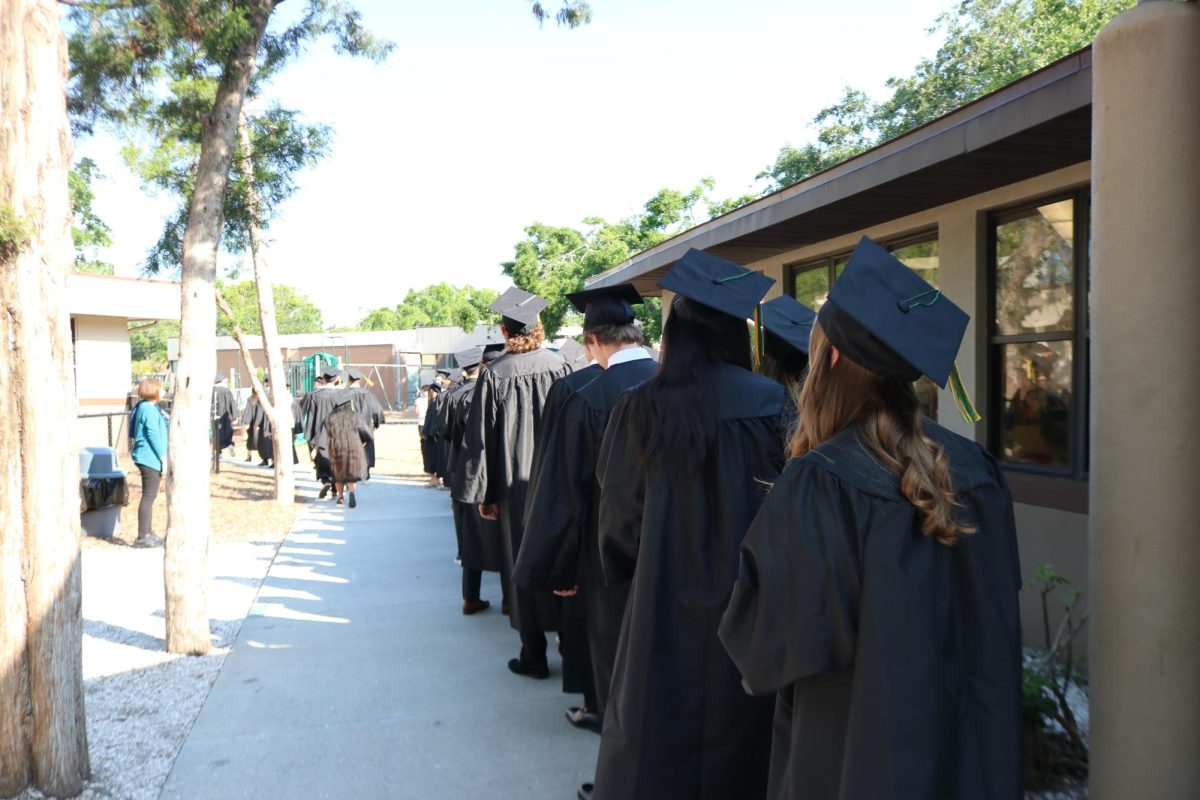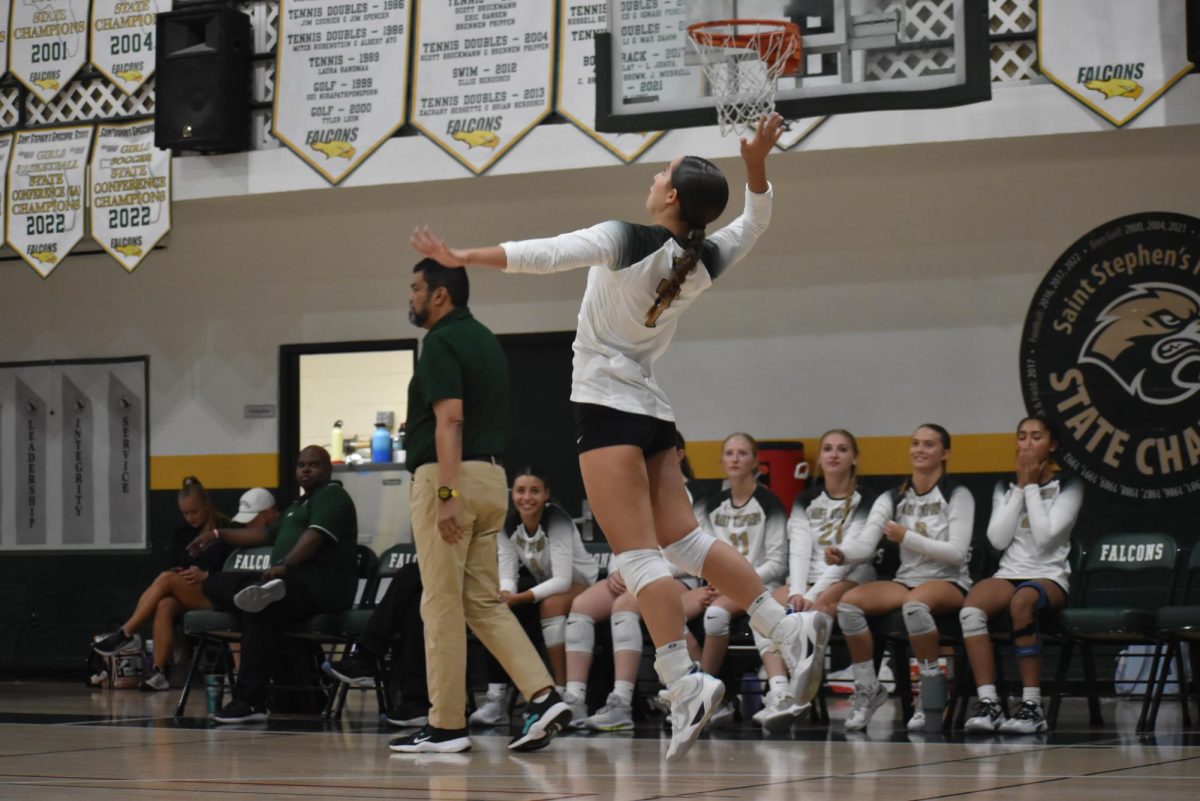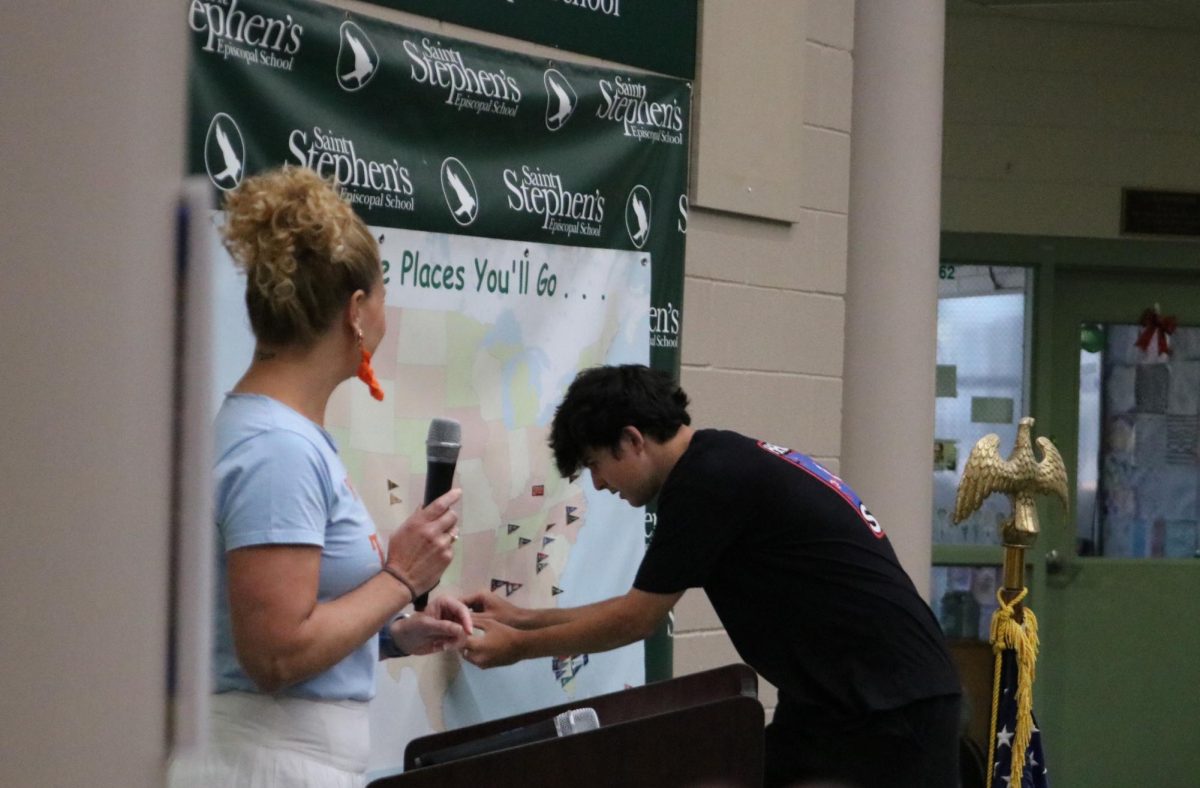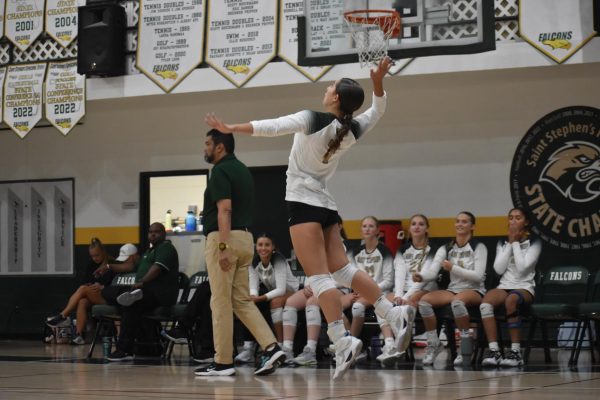Is the five-minute break between periods enough?
Schedules seem like they’re written in stone, but they aren’t. Extending the 5-minute break would make a world of difference.
More time between the bells would mean more time to use the restroom, meet with friends, take a walk, and decompress.
March 18, 2021
Picture this: It’s 8:45 AM and the bell just rang. You finish up your marine science class (yes, all the way by the McLewis Bayou), and you’re now expected to trek back to the far end of the upper school for algebra. Making it in time isn’t impossible. In fact, you know you won’t be late… As long as you make sure to spend the ENTIRETY of your five-minute “break” rushing to class, ignoring your friends, not going to the bathroom, and having absolutely no downtime before you’re thrust into another 45 minutes of work.
No matter what classes you take, chances are you have at least one between-period break where you have to hustle to your next class. This can get especially grating if you have a teacher who makes you stay after the bell, or if you’re slowed down by huge crowds of people filling up the halls.
These short, five-minute breaks between bells are problematic, but, is there a solution to this? Can we make a schedule change that would concretely improve our daily lives? The schedule seems to be “written in stone” after all.
In my view, there IS a solution, but it’s not one the students can implement. Instead, Saint Stephen’s as a school could possibly mitigate this issue by increasing the lengths of the breaks. Elongating between-the-bell breaks would not only fix the problem of time, but also, believe it or not, some of the problems that teachers have such as unengaged and stressed-out students.
For evidence of the benefits of longer breaks, look to the schedule-model in other countries such as Finland. As explained in one article by The Atlantic, Finnish schools have a schedule characterized by much longer breaks between periods and, according to The Atlantic, the nation improved participation in the classroom because of it.
“Once I incorporated these short recesses into our timetable, I no longer saw feet-dragging, zombie-like children in my classroom,” said Finnish teacher Timothy Walker. He then elaborated that “most importantly, they were more focused during lessons.”
It’s not hard to see why improvements would take place. Increasing a break, even by adding as little as two to three minutes, can have a huge impact on the students’ ability to pay attention to the material. Walker brings up the works of author Anthony Pellegrini, who has written extensively about the importance of breaks in education, stating “Pellegrini’s findings prove that frequent breaks boost attentiveness in class.”
But longer breaks aren’t just beneficial because they can increase productivity. Research compiled by Edutopia also shows that longer breaks will help to lessen stress. “Both students and teachers benefit from using unstructured breaks to reduce stress,” explains author Youki Terada. Intense stress can negatively affect mental health and even lead to serious conditions such as depression or heart disease.
There are some obvious criticisms that can be leveled at the concept of increasing break lengths. For example, how would this affect the plans of teachers who have mapped out curriculums already? The truth is, it wouldn’t affect most of them beyond having to increase effectiveness, cutting their lessons down by two minutes or so. If anything, shortened periods may help certain teachers to cut any non-essential material, and with the students able to focus better, the extra time won’t be needed.
The true challenge for Saint Stephen’s would be the implementation of a new schedule, but a schedule shouldn’t be something unalterable. As an example of a potential solution, see the potential model to below for if we were to implement 10-minute breaks with 40-minute periods.
1st Period: 8:00-8:40
2nd Period: 8:50-9:30
Advisory/Chapel: 9:30-10:20
3rd Period: 10:20-11:00
4th Period: 11:10-11:50
5th Period: 12:00-12:40
Lunch: 12:40-1:25
6th Period: 1:25-2:05
7th Period: 2:15-2:55
Keep in mind that this model is just a hypothetical, as it’s unlikely students need a full ten-minute break when a seven or eight-minute one would have the same effects. But regardless, this model’s inclusion proves that it’s not impossible to adapt to a schedule with longer breaks and still maintain the school day’s standard length.
There’s no doubt that increasing break times would be a change for the better. It would be a great choice that could benefit students and teachers in the long run. Five minutes just aren’t enough.




























